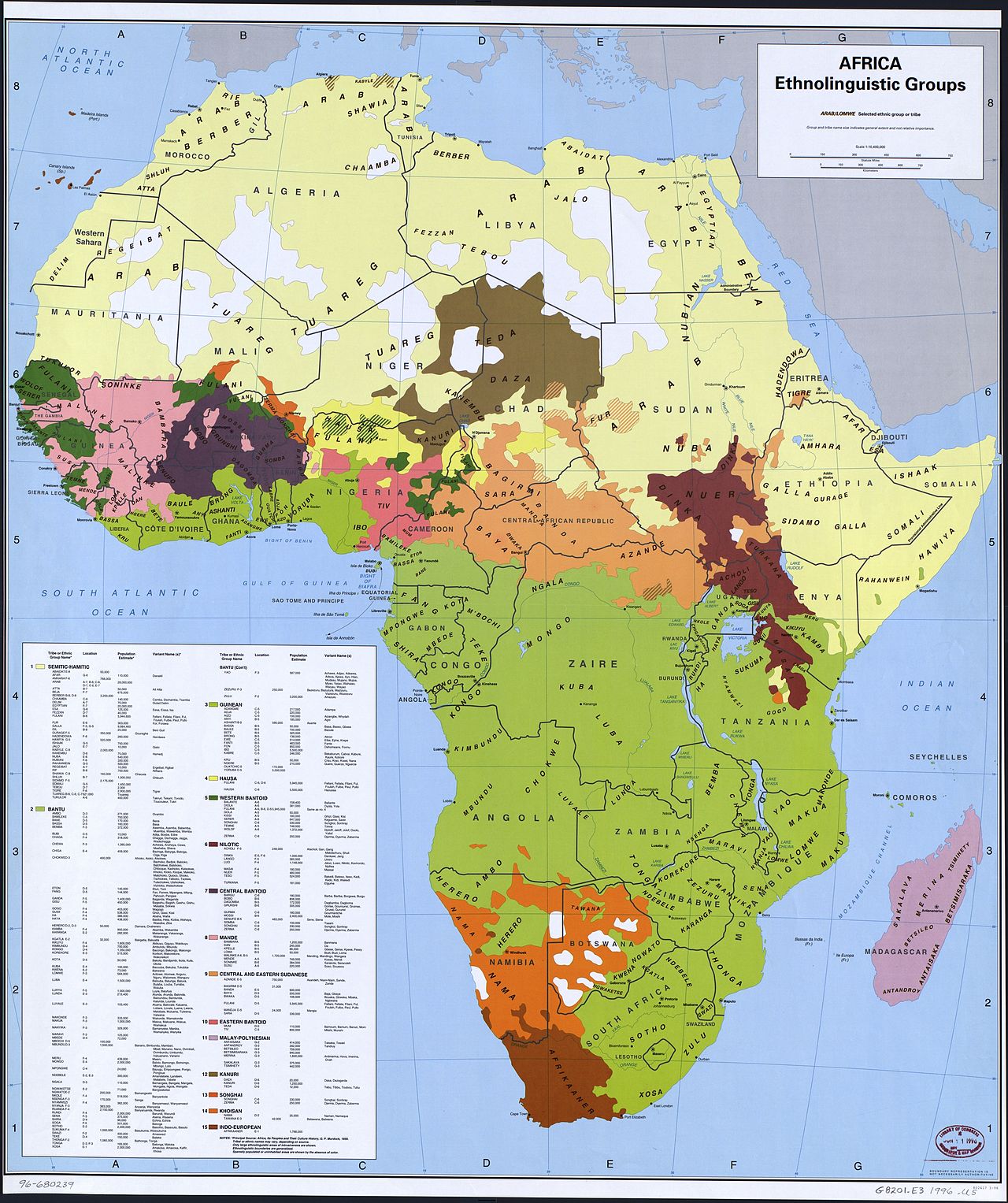

Lesson 2: Languages of Sub-Saharan Africa
Learning Objectives
After finishing this lesson, you should be able to:
- make a general and accurate statement about the size of the Khoisan group in terms of number of languages and number of speakers
- identify the IPA symbol for each of the five major clicks, as well as the technical and non-technical description of each one
- make a general and accurate statement about the size of the Niger-Congo family in terms of number of languages and number of speakers
- describe the organization of Niger-Congo noun class systems, including the number of classes and the basis for noun categorization, the use of noun class prefixes, and the enforcement of noun class agreement within a sentence
Listening Assignment
Cox, Patrick. 2013. Podcast “From Afrikaans to Zulu”. The World in Words. Public Radio International.
© 2008 PRI. Used under Fair Use provisions for educational purposes.
Listening Guide
This listening is an episode from the podcast The World in Words, published by Public Radio International. It describes the situation of the South African language Zulu in the context of colonial South African languages introduced by Europeans.
Background Information
- You should have a basic understanding of what apartheid was. If this is a new concept for you, read the first several paragraphs of the Wikipedia entry.
- English and Afrikaans are both Indo-European languages; they are unrelated to the languages of South Africa that existed prior to the arrival of Europeans.
Reading Questions
- What happened to the status of English and Afrikaans after apartheid?
- Why do some black South African parents object to the language instruction in "good" schools?
- What is the motivation behind Phiwayinkosi Mbutazi's efforts to modernize Zulu?
- What are some perceived problems with Zulu in its current state?
Lesson
An Overview of Sub-Saharan Language Groups
In this lesson, we will focus on two language groups from Sub-Saharan Africa: Khoisan and Niger-Congo. Between the two, Niger-Congo contains languages that many non-linguists have heard of, including Swahili, Zulu, Shona, and Yoruba. With around 1,500 languages, it is the largest language family in the world.
The other group, Khoisan, is much smaller than Niger-Congo, but is unique because its languages are among the only ones in the world to use “click” speech sounds.
The map below shows ethnocultural groups in Africa. Our focus in this lesson will be on the language groups in the lower two-thirds of the continent. The pale yellow portion in the upper third will be covered in Lesson 3.
